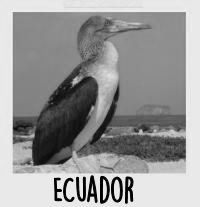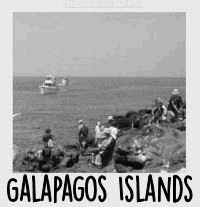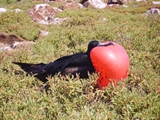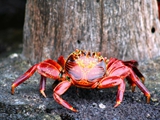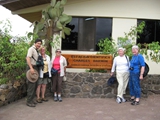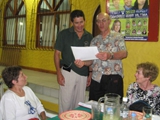Galapagos Islands
View Ecuador in a larger map

.
Stunning your eyes, mesmerizing your mind, and renewing your spirit, the Galapagos Islands are an experience to treasure. Where volcanoes meet the sea, and Darwin’s species flourish with unrivaled diversity and vibrancy, Ecuador’s “Archipelago de Colon,” is a place to reconnect with the beauty and wonders that our natural world can offer.
Located on the equator nearly 600 miles out to sea off the coast of Ecuador, 13 main islands are surrounded by dozens of islets and crystal blue tropical waters.
Geographically diverse, the Galapagos Islands include some of the world’s most active volcanoes, as well as lush rainforests and pristine beaches.
Bird is the Word – The islands that were the renowned inspiration for Darwin’s “Origin of the Species,” boast more than one thousand species of birds, including over 100 different varieties of hummingbirds alone. Spot penguins and flamingos, and marvel at the largest tortoises that live to be over 100 years old.
Wildlife can be embraced intimately because the animals have no natural predators and no fear of human visitors. You may find yourself on the beach with a group of iguanas or penguins. Giant tortoises, lava lizards, sea lions, and angel fish are just a few of the hundreds of species that call the Galapagos home.
Climate – Temperatures usually range between 60 and 80 degrees, but what changes is whether it is wet or dry. December to May is warm and wet with clears skies. This is the perfect time to watch bird nesting. June through November is considered dry and cooler.
History – These unique islands were officially discovered in 1535 and visited by Charles Darwin 300 years later. Based on his observations and inspirations of animals on the islands, Darwin developed his theory of natural selection. After becoming a national park in the late 1950s, UNESCO declared the islands a World Heritage Site.
Here’s What You’ll Do:
E njoy snorkeling, swimming, sailing, kayaking and hiking
N avigate around sea lions at Kicker Rock
J ourney to the twin craters in the Santa Cruz highlands
O bserve giant land tortoises, marine iguanas, pelicans and exotic birds
Y ou’ll bring home memories for a lifetime
All tours feature:
-Soft adventure combined with maximum comfort-Group size of 12 or less to assure attention to individual needs
-Dinners featuring local cuisine and performances by folk artists
-Guided tours combined with opportunities to explore on your own
Customized trips for groups of 4 or more can be planned to fit specific dates & interests - For more information contact Connie Champlin at cchamp@culturaladventures.info or cchamp@iquest.net
2016 Tour Dates
Nov 2 -14



























 1
1 2
2 3
3 4
4 5
5 6
6 7
7 8
8 9
9 10
10 11
11 12
12 13
13 14
14 15
15 16
16 17
17 18
18 19
19 20
20 21
21 22
22 23
23 24
24 25
25 26
26